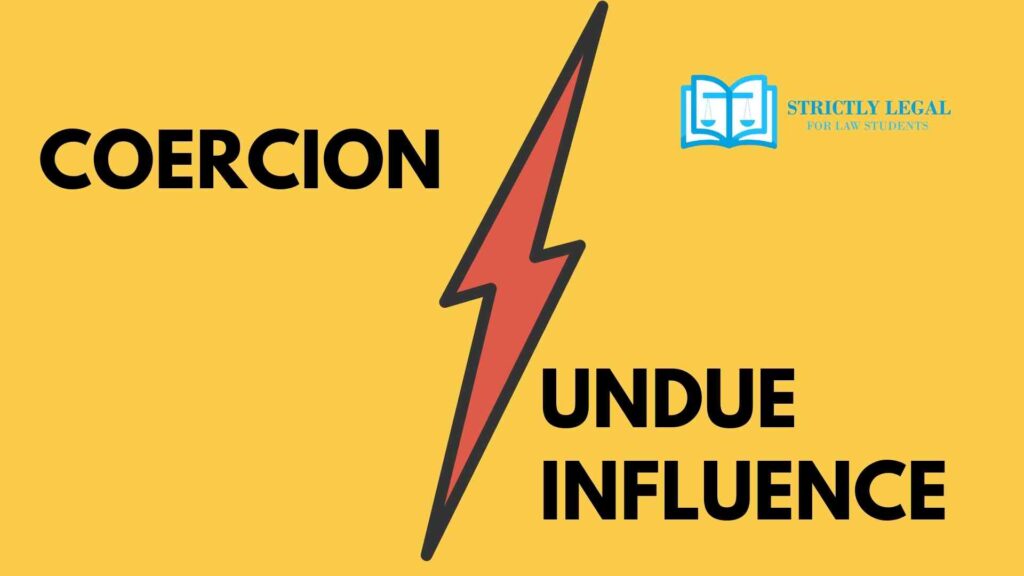Indian Contract Act, 1872 defines that “an agreement enforceable by law is a contract.” In general and in layman’s terms, it can be said that a contract is formed when two or more parties perform a promise or an act or omission in return for consideration or when something is returned. A contract can be specified as a creation of accountability and obligation among parties to ensure no breach of contract. One of the essential ingredients to enter into a contract is free consent without the same, the same is said to be void.
Table of Contents
REASON FOR FREE CONSENT BEING IMPORTANT IN A CONTRACT
U/s 14 of the Indian Contract Act, 1872, the term “free consent” has been described as a contract that does not form from coercion, misrepresentation, mistake or undue influence. Consent and free consent are two separate terms specified in the act. The latter is focused on the principle of Consensus ad idem. According to the Dictionary of Cambridge, the aforementioned maxim is specified as “agreement between different people or groups about the exact meaning of a contract that is necessary before the contract is considered to be legally acceptable.” This states that, for a contract to be enforceable by law, it should not be only consensual but the consent to enter into the contract provided by the parties should be voluntary and free.
UNDERSTANDING THE TERM “COERCION”
Coercion has been defined u/s 15 of the Indian Contract Act, 1872. In simple terms, the provision states that coercion is the committing or threatening someone to commit any act that is forbidden or prohibited by the Indian Penal Code, or the threatening to detain, unlawful detaining with the intention to forcefully make a person enter to an agreement. In short, any act is used as a threat or physical force to forcefully obtain the will of a person for making him enter into an agreement.
To create the term “coercion” a party must show that they were forced to enter into a contract by the other party that he would have not have otherwise entered into. The key elements to perform coercion is as follows-
- Committing or threatening to commit any act or omission punishable by the law.
- Unlawful detention of someone or someone’s property.
Nonetheless, burden of proof lies on the aggrieved party.
Illustrations of Coercion:
- A threatens to kill B, if he does not sign the contract.
- A threatens to break the arms and legs of B, if he does not sell his house.
- A threatens B to kidnap his daughter in case B marries D.
UNDERSTANDING THE TERM “UNDUE INFLUENCE”
Undue Influence has been defined u/s 16 of the Indian Contract Act, 1872. The term undue influence can occur in a position when one of the parties to a contract is in a superior or dominating position. For undue influence to happen, it is necessary that the dominating position of one party gives and unjust upper hand to acquire consent from the other party, which follows the Doctrine of Equity. The provision has also threw light on the conditions where a person is said to dominate are as follows:
- When one party to the contract has evident authority over the other.
- When one party to the contract has fiduciary relationship over the other.
- When one party to the contract enters to the contract in case of temporary or permanent damage to mental dimensions.
However, a “fiduciary relationship” can be defined as “a relationship in which one party places special trust, confidence, and reliance in and is influenced by another who has a fiduciary duty to act for the benefit of the party.”
Illustrations of Undue Influence:
- A, Son, forces his father to transfer all his properties in A’s name.
- A, a man influenced by disease or age, is induced by B’s influence over him as his medical attendant, for having him to pay unreasonable sum for his medical profession. B employs undue influence.
DIFFERENCE BETWEEN COERCION AND UNDUE INFLUENCE
| COERCION | UNDUE INFLUENCE |
| This falls in the purview of Section 15 of the Indian Contract Act, 1872. | This falls in the purview of Section 16 of the Indian Contract Act, 1872. |
| Coercion is a criminal offence punishable under Indian Penal Code. | Undue Influence is not a criminal offence. |
| Usage of threats and physical force is involved having absolutely no relationship between the parties to contract. | Usage of Psychological or mental force between the parties to contract having a fiduciary relationship. |
| Force is used as a tool for making an unwilling party enter into a contract. | Influence is used as a tool to make a party enter into a contract. |
| A, party no 1 threatens to kill B a builder, if C, B’s son does not sell his property. | A, the boss of a company, asks his employee B to sell him his car for a low price, in return for a promotion of B. |

Law student.
Believes in penning down thoughts!




